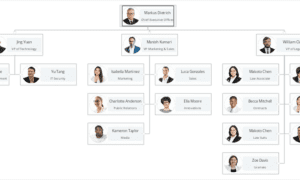In B2B sales, bottlenecks can develop quietly over time, slowing progress long before they’re noticed. Manual workflows, disconnected systems, and outdated tools often create inefficiencies that ripple across operations. What begins as a small delay in processing or a missed update in pricing can quickly turn into lost orders, frustrated customers, and missed revenue opportunities.
For many organizations, legacy systems are at the root of the problem. Outdated platforms make it difficult to adapt to modern buyer expectations — such as real-time information, customized pricing, and seamless purchasing experiences. These limitations not only affect internal productivity but also shape how customers perceive the business. In a competitive marketplace, even minor friction can push a buyer toward a more efficient competitor.
When inefficiencies persist, they do more than slow transactions. They limit scalability. A sluggish order process makes it harder to manage higher volumes, while inaccurate inventory data can lead to oversupply or shortages. They limit scalability. A sluggish order process makes it harder to manage higher volumes, while inaccurate inventory data can lead to oversupply or shortages. Over time, those setbacks erode margins and reduce the ability to respond to shifting demand.
The first step toward improvement is visibility — understanding where slowdowns occur and how they affect both your operations and your relationships. Late responses, inconsistent pricing, or unclear communication all impact buyer confidence. Providing personalized catalogs, transparent pricing, and flexible payment options can go a long way toward rebuilding trust and loyalty.
Automation is the key to removing these pain points. Automated workflows streamline order management, reduce errors, and give teams access to real-time inventory and pricing data. Instead of chasing updates or manually adjusting quotes, sales teams can focus on building relationships and closing deals. Automated workflows streamline order management, reduce errors, and give teams access to real-time inventory and pricing data. Instead of chasing updates or manually adjusting quotes, sales teams can focus on building relationships and closing deals. With pricing engines and rule-based systems in place, companies can offer consistent terms to every customer without delays.
Automation also promotes transparency. Buyers can view product details, availability, and payment options instantly, making transactions smoother and more predictable. Internally, automation minimizes administrative work and frees up employees to focus on value-added activities — the kind that directly contribute to growth.
Modern B2B ecommerce platforms take these benefits even further. By integrating sales, inventory, and finance systems, they create a unified environment where every transaction is tracked and optimized. These platforms not only help businesses scale but also provide the agility needed to respond quickly to market changes and buyer demands.
In today’s business climate, efficiency isn’t just about speed — it’s about precision and trust. Companies that remove friction from their sales processes build stronger partnerships, enhance profitability, and position themselves for long-term success. Streamlining B2B sales isn’t just operational improvement — it’s strategic growth in action.
To explore more about the invisible bottlenecks in B2B sales, refer to the accompanying graphic from k-ecommerce, a b2b ecommerce platform.
Read More From techbullion




































